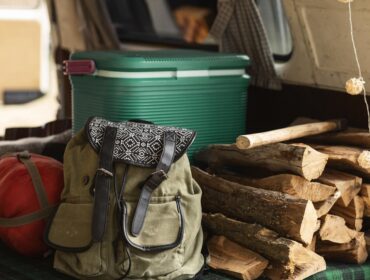Nature can be a wild, unforgiving place, so it’s important that you are well-prepared to take on the challenges presented outdoors. One of the inherent dangers of frolicking in the outdoors is having a run-in with a dangerous spider. Spiders are a vital part of the world’s ecosystems, and they often get more of a bad rap than they deserve. However, there are a few of them that you should keep a wary eye out for when you’re camping, hiking, or doing anything outdoors, for the consequences of just one bite can be calamitous. Here are the top 3 venomous spiders in North America that can cause significant damage. Familiarize yourself with these species so you can avoid any nasty confrontations!
Latrodectus (black widow spider)

More commonly known as the black widow spider, Latrodectus is a genus that includes 31 recognized species of widow spiders. These deadly arachnids are called widows for their behavior of eating the males they mate with as soon as the act is complete. Though a variety of species live in many places around the globe, North America harbors at least 4 different species of widows in all climates in all seasons. Widows prefer dark, tight spaces for habitat. This makes woodpiles, rocks, and forest debris a likely place to uncover one unsuspectingly. Their painful bite injects a potent neurotoxin into your bloodstream. It is 15 times stronger than that of a prairie rattlesnake! These venomous spiders are most recognized for their unique body shape and that blazing red hourglass.
Other types of widows do have a totally different appearance, so do your research! Although their venom has resulted in fatalities among the very old or young, more commonly victims experience nausea, headaches, abdominal pain, or vomiting. With the development of an antivenin to the toxin in 1956, less than 1 percent of victims are at risk of death, so it is important that you seek medical attention if you’re bitten!
Loxosceles (recluse spider)

Google “brown recluse spider bite” and you’ll have enough imagery to keep you awake at night for days. The Loxosceles, or recluse spider, is arguably the most dangerous spider in North America. Its venom causes wounds to fester and necrotize. Also known as fiddleback, violin spiders, and reapers, the recluse favors warmer areas, but can relocate inadvertently to other regions. Recluse spiders are not aggressive, and only bite when physically threatened. Many incidents happen from putting on clothes that are harboring a recluse, or unknowingly picking one up when gathering wood.
Although not every bite will create a flesh-eating wound, their venom contains a dermonecrotic agent that is only otherwise found in some pathogenic bacteria. Left untreated, the wounds can become very serious, requiring skin grafts and possible amputation to heal. Some victims have been able to halt the progression of the wound damage successfully by seeing a doctor immediately after the bite. Don’t waste any time if you have been bitten by one of these venomous spiders!
Tegenaria agrestis (hobo spider)

Tegenaria agrestis is easy to remember, because it reminds you of the spider’s demeanor right in the Agrestis part of its name. Doesn’t that sound like ‘aggressive’? Remember that! Known in North America as the hobo spider, this nightmare factory actually hitched a ride here on European ships. They are primarily located in the Pacific Northwest area of the US. Their leg span can measure up to 2 inches, and are common to low, dark spaces where they can build their funnel webs. This can lead to accidental interaction with humans, especially outdoors.
Reports show that hobo spider venom may also cause dermonecrosis. However, studies that replicate envenomation by a hobo spider have produced no cases. That aside, they are aggressive and their bite can cause severe headaches, nausea, weakness, fatigue, and even impaired vision and memory loss. So if you see one, get far away from it!
Featured Image from Shutter Stock




